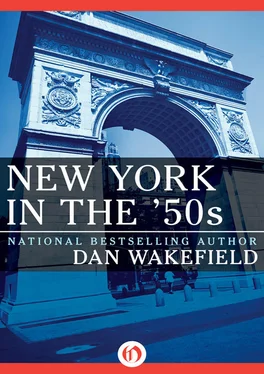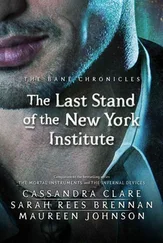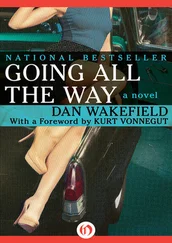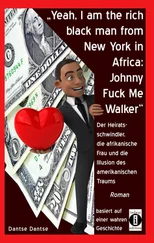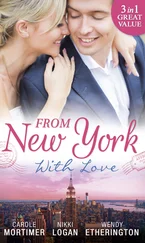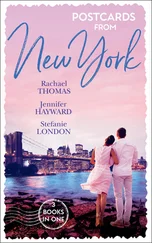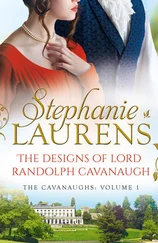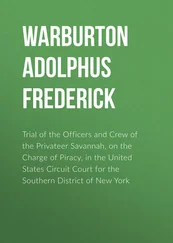Whose blood could fail to be stirred by the prospect of such a journey? Betty Bartelme, who became a book editor and now teaches a course in the history of publishing at Hofstra College, listened to “Grand Central Station” when she grew up in Iowa, and she thought of the program—as if she were living out one of its episodes—when she took a train called the Pacemaker to New York from Chicago. She had just graduated from St. Catherine’s College in St. Paul, Minnesota, when she “went to New York to visit a friend and never came back.”
Grand Central also conjured up for Betty and me and our contemporaries the movie scenes of those classic meetings of soldiers come home or about to embark, in either case embracing beneath the great clock the girl of their dreams, the fur-coated fantasy of glamour and love whose heart was worth fighting and dying to win. It just wouldn’t be the same at the Port Authority Bus Terminal.
The train stations of America’s cities were not simply points of arrival and departure, loading docks for people and baggage, but awesome, vast cathedrals for the continent-crossing railways that first connected us into one country. Union Station in Indianapolis was the most impressive building in the city, its stained glass windows and high domed ceiling providing the closest thing we had to Chartres. Travel was serious, mysterious, and fun, and the boarding of a train was an act, a decision, not to be taken lightly, for it might well be the turning point of a life, just as it was in so many books and movies.
The trains themselves were nineteenth-century symbols of power, still potent because they were part of the stories we were raised on, part of the powerful sights and sounds of childhood. The Monon Railroad, which ran past the end of my backyard and on to Chicago, told the time for the whole neighborhood, the whistle of the 5:15 calling kids home for supper. Sometimes we put pennies on the track and collected them afterward as souvenirs, symbols of the power of the passing train.
David Amram put pennies on the track of the train whose station was only a mile from the farm he grew up on in Feasterville, Pennsylvania. He dreamed of someday taking his trumpet and going to New York on that train to play in a band; he would realize his dream as a jazz musician, composer, and conductor, playing with Charlie Mingus and later with his own groups. “It was a silver train called the Crusader,” David remembers, “and it had a steam engine. I took it to New York in 1955.”
The great cross-country trains had names, like proud ships, which added to the aura of adventure, the importance the traveler felt in making the journey. One I sometimes took to New York from Indianapolis was called the Spirit of St. Louis. That name reminded the passengers that, like Lindy crossing the Atlantic to Paris, we were part of a heritage of seekers, explorers, pioneers, taking a risk to move on, leave home, try the unknown.
The friends of my generation who came to New York still remember the names of the trains that took them, as well as the adventure of the journey. Meg Greenfield came from Seattle on the Empire Builder. She remembers how “the trains to college were full of all the kids from Seattle or Portland going to eastern schools. I also went sometimes on a train called the City of Portland. It was like a rolling party and marvelous fun—I mean, it was fun for us. It couldn’t have been much fun for the other passengers.”
When I went away to college at Columbia, my mother and father saw me off at Union Station with hugs and tears and promises to write, as if I were a soldier going to the front. In a way, that’s how I felt, eager for action but a little afraid. Then I was greeted by a wonderful surprise: Mr. and Mrs. Evans Woollen were going to New York City on the same train.
I took this as confirmation of my fate, the best omen possible. They were not just the parents of my first high school girlfriend, Kithy Woollen, but also personages in their own right. Mr. Woollen was president of the Fletcher Trust bank in Indianapolis and a distinguished alumnus of Yale who always wore a three-piece suit with a gold watch chain across his vest, the symbol of solid, old-fashioned success and stability. I was awed and somewhat intimidated by him, but his wife, Lydia, was one of my favorite adults, a woman of charm and sharp wit, a kind of midwestern Katharine Hepburn, more soft and slow in speaking but possessing the same intensity of gaze. When I came to see her daughter, she would engage me in conversations about books I was reading and tell me of authors she admired, treating me as if my opinions were worthy of attention.
When they saw me on the train to New York, the Woollens invited me to dinner with them. The old cross-country trains boasted a dining car with a first-class menu and tables with linen cloths and polished silverware gleaming under lamplight, presided over by a staff of attentive colored (as they were called with respect then) waiters who served drinks and meals with a skill unmatched in the finest restaurants. There was also a club car with comfortable lounge chairs and cocktail tables for having a drink and a smoke and perhaps meeting a fellow passenger ( that one, the mysterious blonde just lighting up a cigarette, who looks a bit like Ingrid Bergman in Casablanca ), or reading a book and sipping a beer, as you watched the landscape and the past slip painlessly by through the window.
Leslie Katz, an author and the publisher of the Eakins Press, remembers the dining car of a B & O train called the Royal Blue, which he took the first time he went to New York from Baltimore: “They served the food on ceramic plates with pictures of railroad trains on them. I took that train at Christmas, and when you approached the Susquehanna, the conductor turned out the lights in the car and said, ‘Now you can see the B & O Christmas tree.’ And just then you passed this tree with colored lights.”
When the maître d’ grandly seated me and the Woollens at a table in the dining car and gave us menus to study, I tried to find a modest-priced meal among what seemed such luxurious choices, but before I could make a selection, Mr. Woollen announced in a tone of finality (he tended to speak in ultimatums): “Dan, you’ll have the steak.” I’m sure he knew I never would have ordered the most expensive dinner myself, but he wanted me to have it, I think, for sustenance and celebration on the eve of my new college career.
Mrs. Woollen asked me slyly, “Are you still WCTU or will you have a cocktail?” She knew I’d abstained throughout high school, and so made the joking reference to the Women’s Christian Temperance Union, one of the “dry” lobbies for Prohibition that was now as outdated as raccoon coats, flapper styles, and other relics of the twenties. Proud to show I’d become a man of the world, I denied any allegiance to the WCTU and ordered a whiskey sour, sipping it with casual aplomb while Mr. and Mrs. Woollen enjoyed their own—a whiskey sour was the drink to have.
The Woollens toasted my going off to Columbia, which made me feel proud and relieved. I considered them the most sophisticated people I knew in Indianapolis, and their endorsement offset the recent lecture from my mother’s cousins, Aunt Mary and Uncle Clayton, who had been summoned to warn me of the perils a young man faced going east to school. Such a questionable escapade was deemed especially dangerous at the liberal (“pinko” was the less polite designation) stronghold of Columbia, in alien New York City, particularly at this menacing time in history when our way of life was being threatened by godless communism, as Senator Joseph McCarthy and his followers were telling us all the time by exposing citizens they charged with being Reds in our very midst.
Читать дальше
